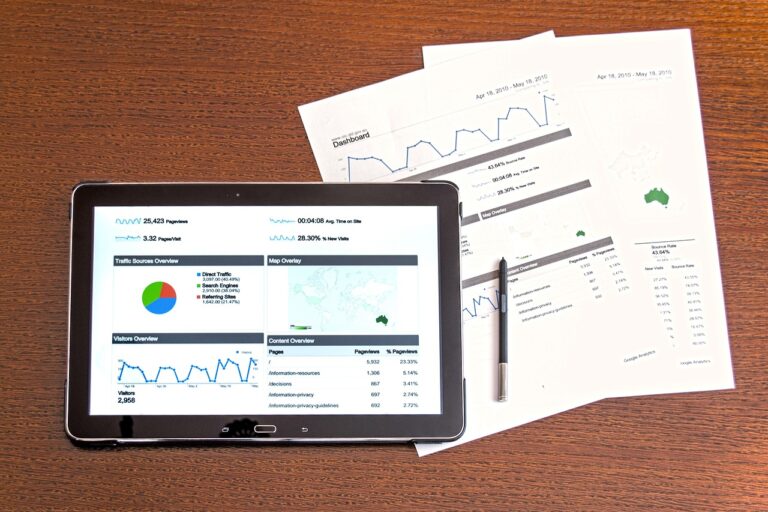Implementing Data Governance Frameworks for Regulatory Compliance
laser247 register, lotus3655, sky247login:Implementing Data Governance Frameworks for Regulatory Compliance
Data governance is becoming increasingly important in today’s business landscape, especially when it comes to regulatory compliance. With the proliferation of data privacy regulations such as the GDPR and CCPA, organizations need to have a robust data governance framework in place to ensure that they are compliant with these regulations.
In this article, we will discuss the importance of data governance for regulatory compliance and provide some best practices for implementing a data governance framework within your organization.
Why is Data Governance Important for Regulatory Compliance?
Data governance is the process of managing the availability, usability, integrity, and security of data within an organization. It involves the people, processes, and technologies that are used to ensure that data is accurate, consistent, and secure.
When it comes to regulatory compliance, having a data governance framework in place is crucial for several reasons:
1. Compliance with Data Privacy Regulations: Data governance helps organizations ensure that they are compliant with data privacy regulations such as the GDPR and CCPA. These regulations require organizations to protect the personal data of their customers and employees and to implement data governance practices to ensure that this data is secure.
2. Data Quality: Data governance helps organizations maintain the quality of their data by ensuring that it is accurate, consistent, and up to date. This is important for regulatory compliance as inaccurate or outdated data can lead to compliance issues.
3. Data Security: Data governance helps organizations protect their data from unauthorized access, disclosure, or loss. This is important for regulatory compliance as data breaches can result in significant penalties and damage to an organization’s reputation.
Best Practices for Implementing a Data Governance Framework
Implementing a data governance framework for regulatory compliance can be a complex process, but there are some best practices that organizations can follow to ensure success:
1. Define Data Governance Policies and Procedures: The first step in implementing a data governance framework is to define policies and procedures that outline how data will be managed within the organization. These policies should address data quality, data security, data privacy, and data retention.
2. Identify Data Governance Stakeholders: It is important to identify the stakeholders within the organization who will be responsible for overseeing the data governance framework. This may include data stewards, data owners, and data governance committees.
3. Establish Data Governance Roles and Responsibilities: Once the stakeholders have been identified, it is important to define their roles and responsibilities within the data governance framework. This will help ensure that everyone understands their role in the process and can work together effectively.
4. Implement Data Governance Tools and Technologies: There are many tools and technologies available that can help organizations implement a data governance framework. These tools can help automate data governance processes, track data lineage, and monitor data quality.
5. Monitor and Report on Data Governance Compliance: It is important to continually monitor and report on data governance compliance to ensure that the framework is effective. This may involve conducting regular audits, tracking key performance indicators, and reporting on compliance to senior management.
6. Continuously Improve Data Governance Practices: Data governance is an ongoing process, and organizations should continuously look for ways to improve their data governance practices. This may involve updating policies and procedures, implementing new technologies, or providing training to employees.
FAQs
Q: What is the role of data stewards in a data governance framework?
A: Data stewards are responsible for overseeing the implementation of data governance policies and procedures within an organization. They are responsible for ensuring that data is accurate, consistent, and secure and that data governance practices are being followed.
Q: How can organizations ensure that their data governance framework is compliant with regulatory requirements?
A: Organizations can ensure that their data governance framework is compliant with regulatory requirements by regularly auditing their data governance practices, monitoring key performance indicators, and reporting on compliance to senior management.
Q: What are some common challenges organizations face when implementing a data governance framework?
A: Some common challenges organizations face when implementing a data governance framework include resistance to change, lack of executive buy-in, and inadequate resources. It is important for organizations to address these challenges proactively to ensure the success of their data governance initiative.
In conclusion, implementing a data governance framework for regulatory compliance is essential for organizations operating in today’s data-driven business environment. By following best practices and continuously improving data governance practices, organizations can ensure that they are compliant with data privacy regulations and protect their data from unauthorized access or disclosure.







